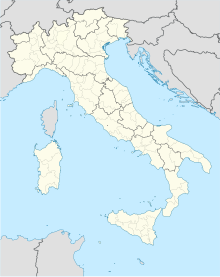
Kartchner Caverns State Park is a state park of Arizona, United States, featuring a show cave with 2.4 miles (3.9 km) of passages. The park is located 9 miles (14 km) south of the town of Benson and west of the north-flowing San Pedro River. Long hidden from view, the caverns were discovered in 1974 by local cavers, assisted by state biologist Erick Campbell who helped in its preservation.

A show cave—also called tourist cave, public cave, and, in the United States, commercial cave—is a cave which has been made accessible to the public for guided visits.

The Salt Cathedral of Zipaquirá is an underground Roman Catholic church built within the tunnels of a salt mine 200 metres (660 ft) underground in a halite mountain near the city of Zipaquirá, in Cundinamarca, Colombia. It is a tourist destination and place of pilgrimage in the country. The temple at the bottom has three sections, representing the birth, life, and death of Jesus. The icons, ornaments and architectural details are hand carved in the halite rock. Some marble sculptures are included. The cathedral is considered one of the most notable achievements of Colombian architecture, being described as a "Jewel of Modern Architecture". The cathedral represents a valuable cultural, environmental and religious patrimony for the Colombian people.

Grotta Gigante, also known as Riesengrotte or as Grotta di Brisciachi, is a giant cave on the Italian side of the Trieste Karst (Carso), close to the village of Borgo Grotta Gigante or Briščiki in the municipality of Sgonico. Its central cavern is 107 m (351 ft) high, 65 m (213 ft) wide and 130 m (430 ft) long, putting it in the 1995 Guinness Book of Records as the world's largest show cave. This record was broken in 2010 when La Verna cave in the south west of France was opened to tourists, measuring 255 by 225 by 195 metres.

An ice cave is any type of natural cave that contains significant amounts of perennial (year-round) ice. At least a portion of the cave must have a temperature below 0 °C (32 °F) all year round, and water must have traveled into the cave’s cold zone.

The Wieliczka Salt Mine is a salt mine in the town of Wieliczka, near Kraków in southern Poland.

Genga is a town and comune of province of Ancona in the Italian region of the Marche, on the Sentino river about 7 kilometres (4 mi) downstream and east of Sassoferrato and 12 kilometres (7 mi) north of Fabriano.
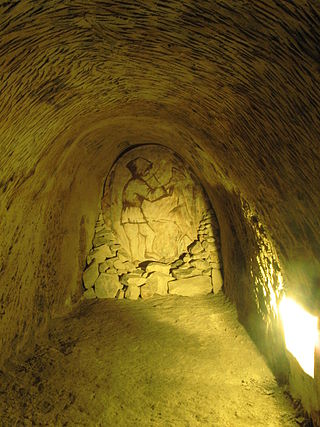
The Chełm Chalk Tunnels are a system of tunnels dug into the chalk under the city of Chełm in eastern Poland. The tunnelling began in the Middle Ages for chalk mining and was discontinued in the 19th century. The tunnels also served Chełm's inhabitants as shelters during raids, wars and pillage. The system is now open solely for tourists. In total, the network of tunnels stretches for around 15 kilometres.
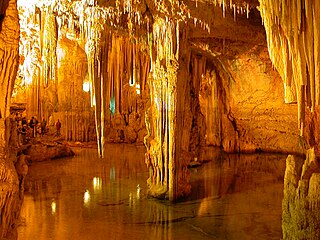
Neptune's Grotto is a stalactite cave near the town of Alghero on the island of Sardinia, Italy. The cave was discovered by local fishermen in the 18th century and has since developed into a popular tourist attraction. The grotto gets its name from the Roman god of the sea, Neptune.

The Bochnia Salt Mine in Bochnia, Poland, is one of the oldest salt mines in the world and is the oldest commercial company in Poland. The Bochnia salt mine was established in 1248 after salt had been discovered there in the 12th and 13th centuries, and became part of the royal mining company, Żupy krakowskie. In 1990, the mine ceased producing salt but remains a tourist attraction.
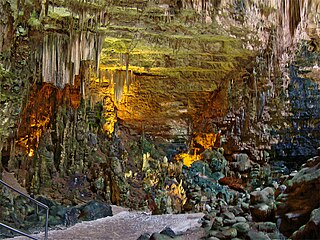
The Castellana Caves are a karst cave system located in the municipality of Castellana Grotte, in the Metropolitan City of Bari, Apulia, southern Italy.
Grand Roc is a mountain of Savoie, France. It lies in the Massif de la Vanoise range. It has an elevation of 3,316 m (10,879 ft) above sea level.

The Sanctuary of Santa Maria infra Saxa and the so-called Tempio di Valadier are two sanctuaries and chapel located at the entrance of the Frasassi Caves, a remarkable karst cave system in the municipality of Genga, in the province of Ancona, Marche, Italy.
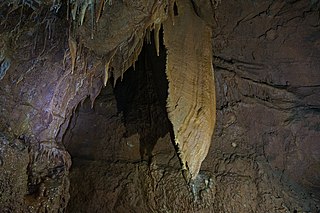
Grotta Regina del Carso is a Karst cave in the village of San Michele del Carso in the municipality of Savogna d'Isonzo. The cave is not open to public, and the access is managed by Talpe del Carso/Kraški Krti speleological group, headquartered in the vicinity of the entrance.
Grotta dell'Artiglieria is a Karst cave in the municipality of Doberdò del Lago. The cave is located NE of Doberdob Lake, near the top of a small hill, in the small village of Jamiano. The name is referred to the artillery battery set in the cave during World War I.
Grotta della Bigonda (The Bigondacave is a natural cave located in Valsugana, near Selva in Grigno, in the province of Trento, on the right bank of the Brenta river.

Grotta del Gelo is a volcanic cave of Mount Etna which is known for the presence of a large amount of ice. The cave formed in 1614–1624 during a large eruption of the volcano, inside one of the lava flows produced during that eruption. Within the two subsequent decades, ice grew and accumulated in the cave. Today it is a tourist destination.
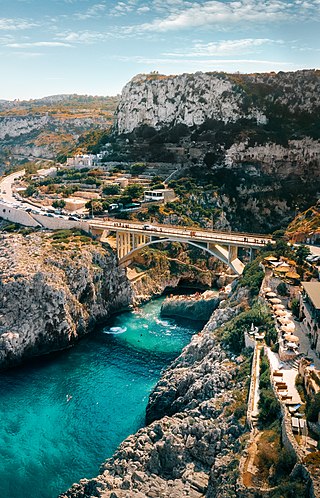
Ciolo is a narrow coastal inlet and a site of historical and environmental interest, which is located in Apulia, Italy. The location is also known as a geological site and for the presence of numerous sea caves, the largest one being the Grotta del Ciolo. Since October 2006 the Ciolo's area has become part of the Regional Park "Costa Otranto - Santa Maria di Leuca e Bosco di Tricase", created by the Apulia region to protect the eastern coast of Salento, specifically the architectural assets as well as important animal and plant species.

The Sentino is a tributary of the Esino River, which springs at 750 m above sea level above the mountains of Gubbio, in Umbria. The Sentino flows from the north-eastern slope of Madonna della Cima.


